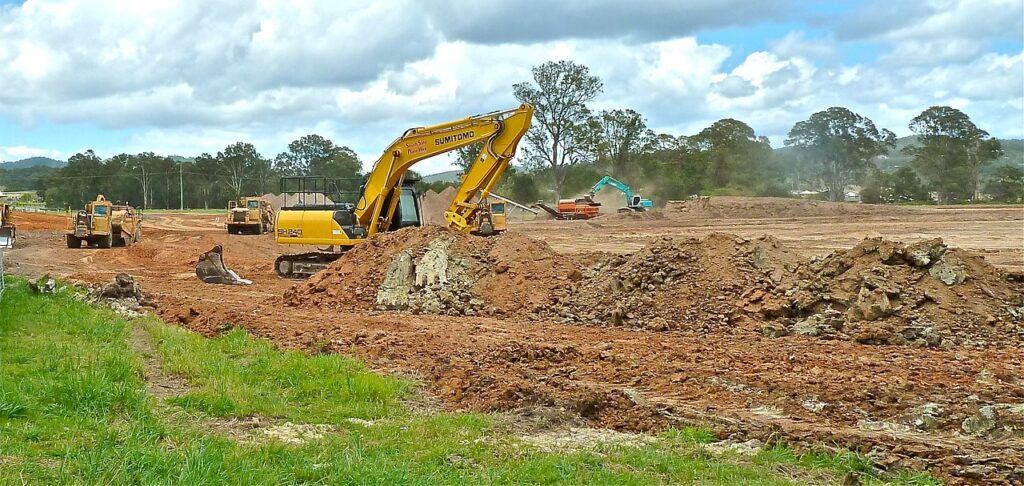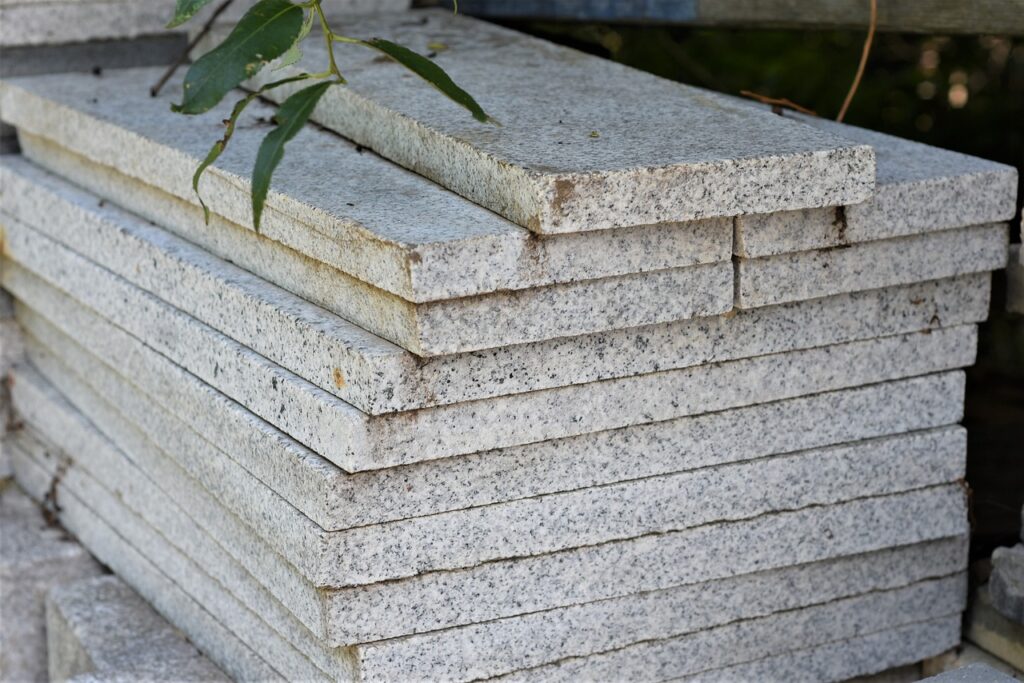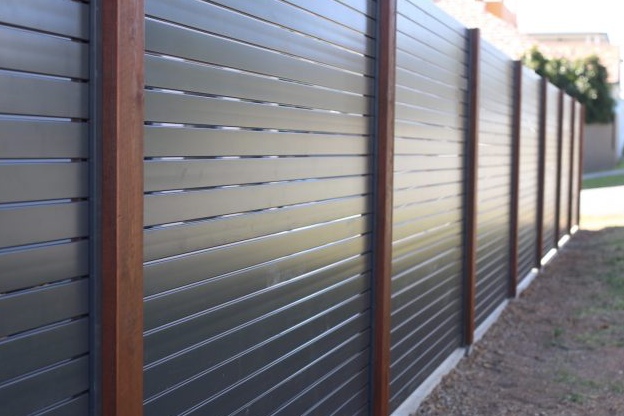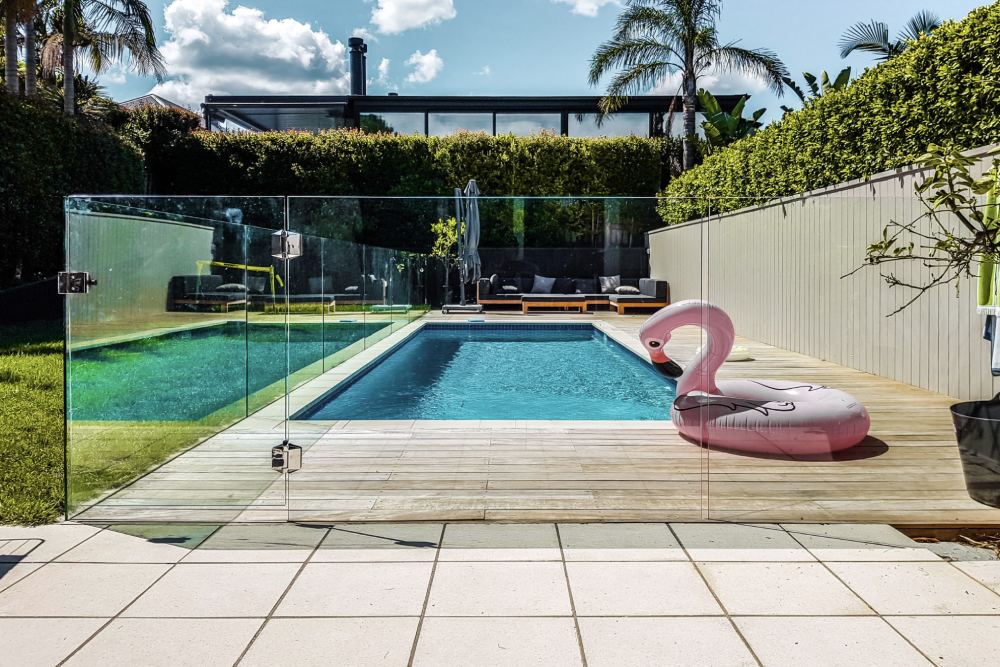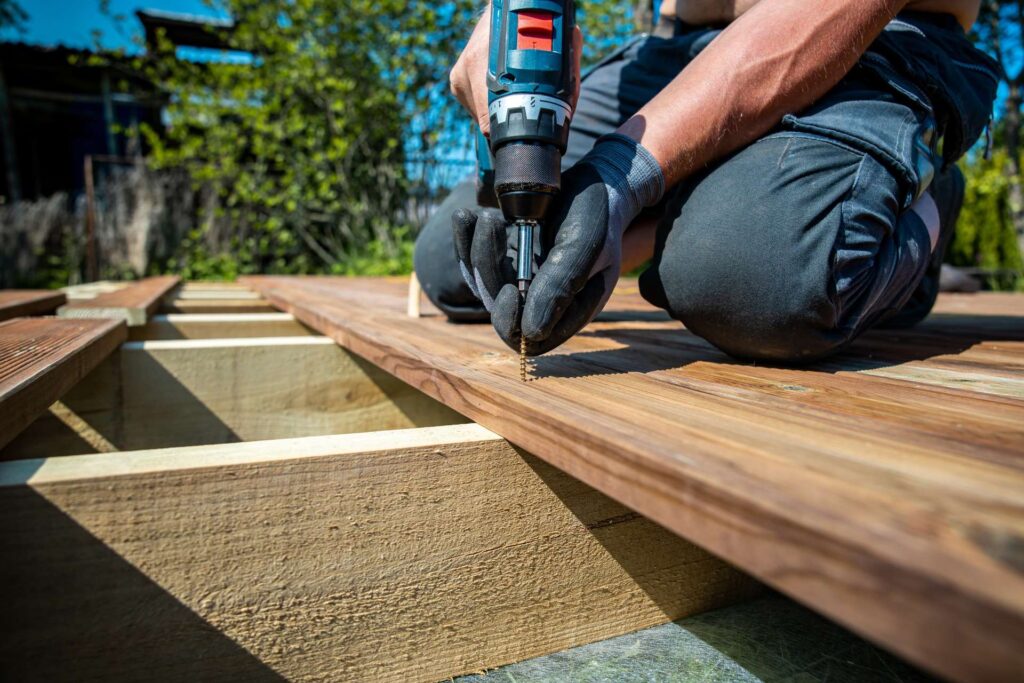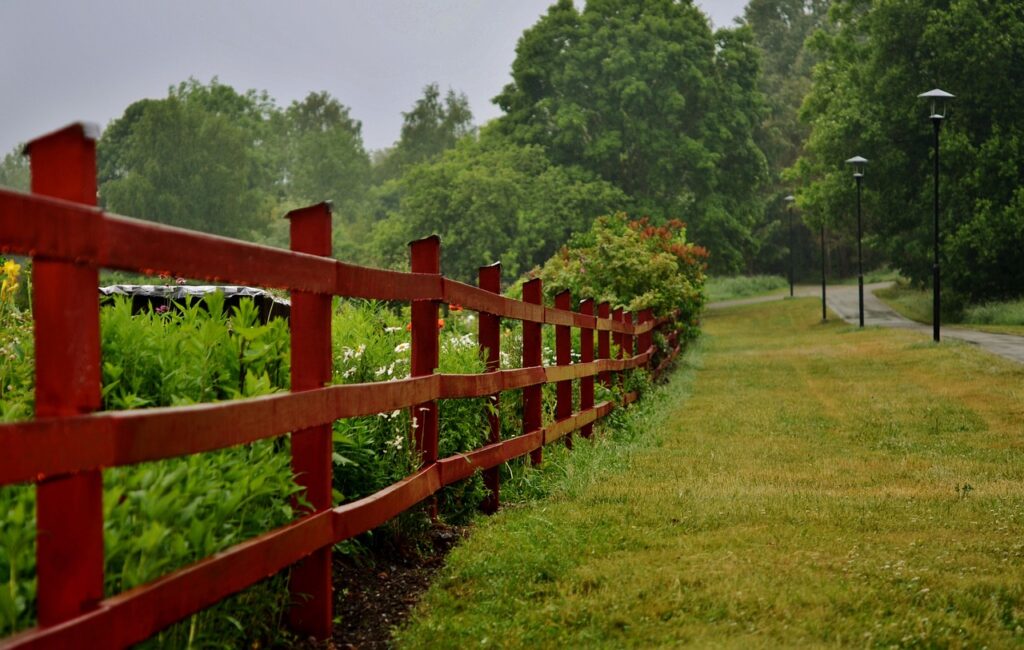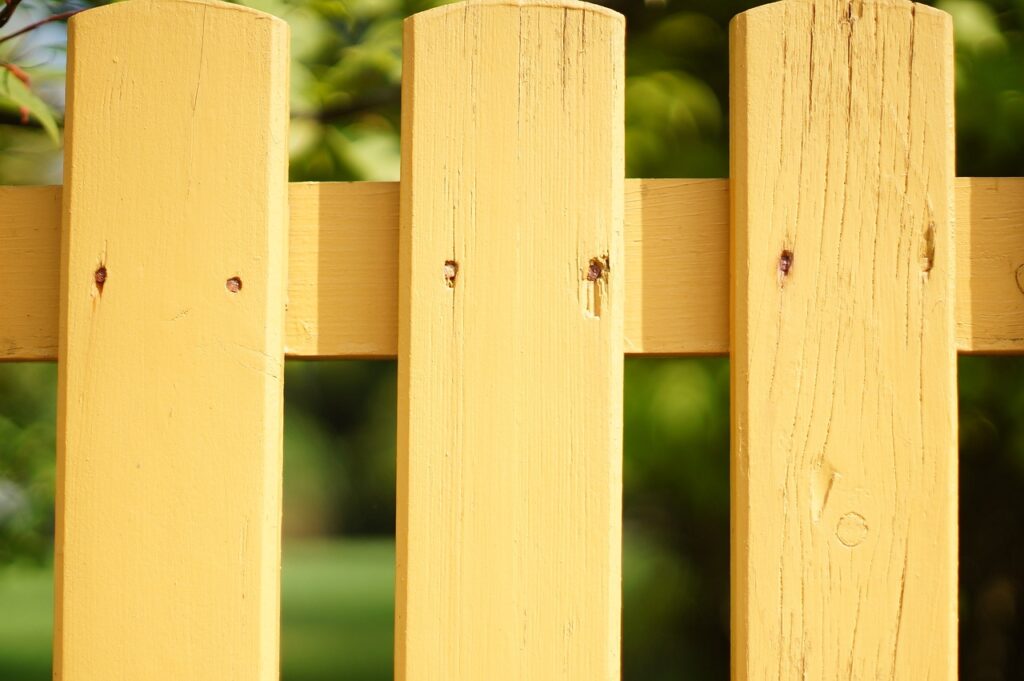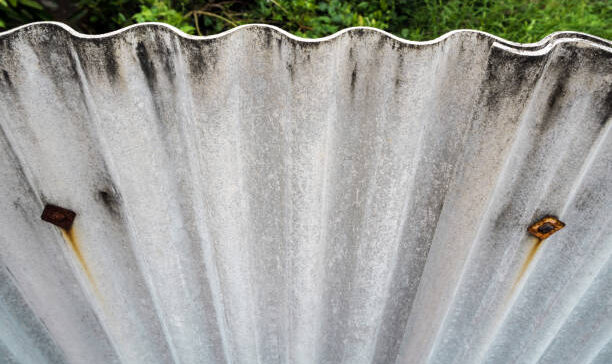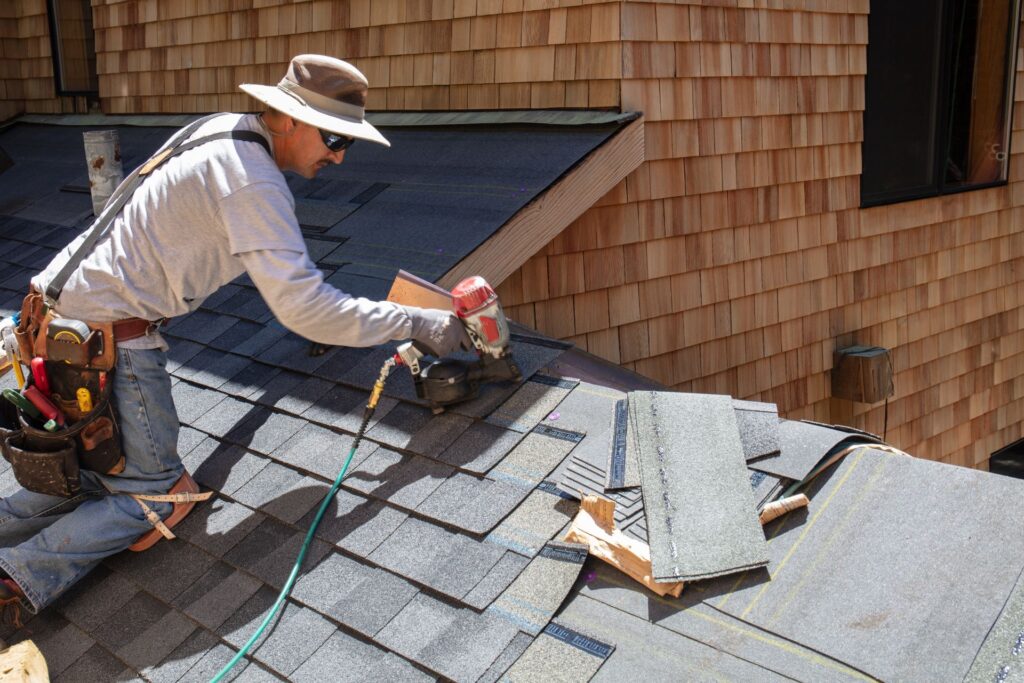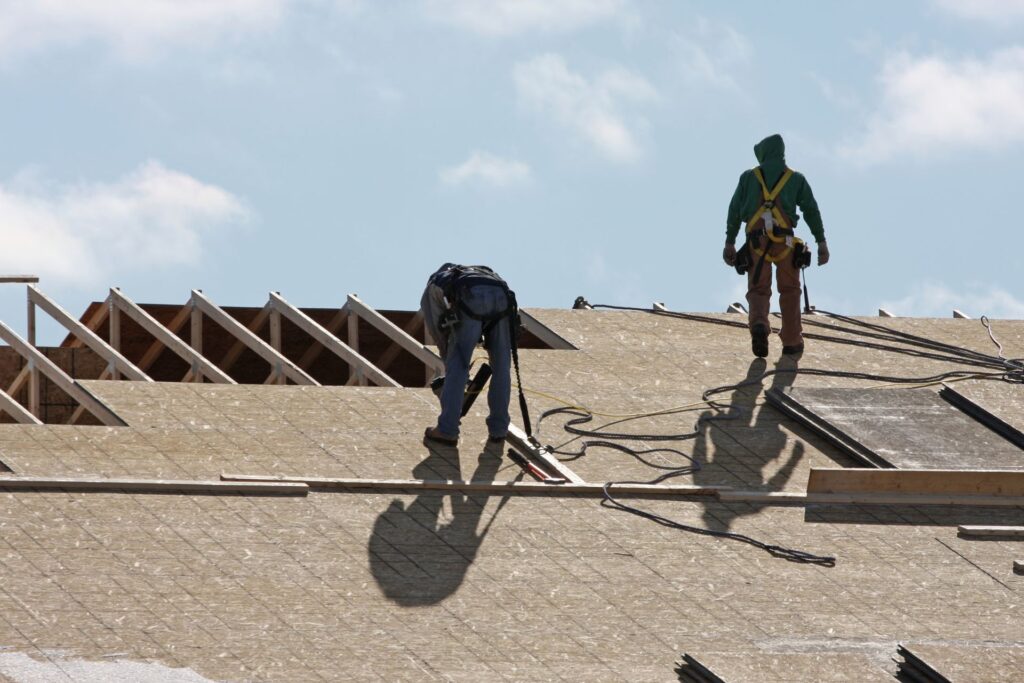Welcome to our comprehensive guide on the average cost to install a bathroom vanity in New Zealand. Whether you’re planning a full bathroom renovation or simply looking to update your vanity for a fresh look, understanding the costs involved is essential. In this article, we’ll break down the various factors that influence the overall price, from the type of vanity you choose to potential plumbing adjustments and labor fees. With our insights, you’ll be able to plan your project confidently and make informed decisions that fit both your style and budget, ensuring your bathroom upgrade is a success.
On average, the cost to install a bathroom vanity in New Zealand ranges between $500 to $2,500, depending on factors such as the size and type of vanity, materials used, labor fees, and any necessary plumbing adjustments.
- What Affects The Cost Of Installing A Bathroom Vanity
- Average Cost Breakdown
- Hidden Costs To Consider
- DIY Vs. Hiring A Professional
- Ways To Save On Installation Costs
- Examples Of Average Installation Costs Across NZ
- FAQs: About The Average Cost To Install A Bathroom Vanity NZ
- Conclusion
- Find A Professional Bathroom Renovators Near You!
What Affects The Cost Of Installing A Bathroom Vanity
When it comes to installing a bathroom vanity, several key factors can significantly impact the overall cost. Understanding these variables can help you budget more effectively and make informed decisions that align with your design preferences and financial expectations.
Vanity Type and Size
The type and size of the vanity you choose are primary determinants of the cost. Bathroom vanities come in various styles, including single-sink and double-sink options. A single-sink vanity is typically more affordable due to its smaller size and less extensive plumbing requirements. On the other hand, a double-sink vanity, while providing more functionality for couples or families, comes with a higher price tag because of the additional materials, larger countertops, and extra plumbing work.
In addition to the number of sinks, the vanity’s size whether it’s a compact design for a small bathroom or a more expansive piece for a larger space also influences the price. Freestanding vanities are often easier to install and may be more budget-friendly. In contrast, wall-mounted vanities, which are gaining popularity due to their sleek, modern look, often cost more to install because they require additional support and precise fitting.
Materials and Quality
The materials used in your vanity can significantly affect the overall cost. Vanities are made from a range of materials, each with its price point and durability. For example, laminate is a popular budget option that offers a variety of designs and is relatively easy to maintain. However, it may not be as long-lasting as other materials.
Wood is a more traditional choice and provides a sturdy, classic look, but it can be pricier depending on the type of wood used. High-quality hardwoods like oak or walnut tend to be more expensive than engineered wood or particleboard.
For those seeking a more luxurious finish, materials like marble, quartz, or granite are commonly used for vanity tops. These materials are durable and visually striking but come with a premium price due to their quality and aesthetic appeal. Ultimately, the choice of materials will depend on your style preferences and how much you’re willing to invest in both the look and longevity of your vanity.
Plumbing Adjustments
One of the hidden costs of installing a bathroom vanity lies in the plumbing adjustments that may be required. If your new vanity doesn’t align with the existing plumbing layout, modifications such as moving pipes, rerouting water lines, or upgrading fixtures may be necessary. These changes can add to the installation cost, particularly if the plumbing adjustments are extensive or if your home has older plumbing that needs upgrading to accommodate the new vanity.
For example, switching from a single sink to a double sink vanity will likely require additional plumbing work to install the second set of pipes and drainage. Similarly, installing a wall-mounted vanity might involve altering the location of the plumbing to fit the elevated design. The complexity of these tasks means that professional plumbing services will be required, which will further increase the overall cost.
Labor and Installation Fees
Labor is another significant factor when calculating the cost of installing a bathroom vanity. Hiring skilled professionals, such as plumbers, carpenters, and electricians, ensures that the installation is done correctly and safely. However, it does come at a cost.
In New Zealand, the cost of labor for bathroom vanity installations can vary, but you should expect to pay anywhere from $50 to $100 per hour for a qualified plumber or carpenter. The total labor cost will depend on the complexity of the installation. For instance, if your new vanity requires extensive plumbing adjustments, custom cabinetry, or electrical work for integrated lighting, labor costs will naturally be higher.
Additionally, some installations may involve specialized tasks like tiling around the vanity or installing a new mirror, which could require the expertise of a tiler or glazier, further increasing the labor expenses.
Location and Regional Variations
Finally, where you live in New Zealand can also have a significant impact on the cost of installing a bathroom vanity. Prices can vary from region to region due to differences in labor rates, material availability, and demand for renovation services.
For example, if you’re installing a vanity in Auckland, you may face higher costs compared to other parts of the country due to the city’s higher cost of living and increased demand for tradespeople. In contrast, regions like Wellington or Christchurch may have more competitive pricing, but the availability of skilled labor can also be a factor. Rural areas might present a different challenge, as transportation costs for materials and the availability of professionals can drive up the overall price.
Understanding these regional variations can help you budget more effectively and decide whether it might be worth sourcing materials from a different location or adjusting your renovation timeline to accommodate local availability and pricing trends.
Installing a bathroom vanity involves more than just selecting a beautiful design. Factors such as vanity type, materials, necessary plumbing adjustments, labor costs, and your location within New Zealand all play crucial roles in determining the overall price. By considering each of these elements, you can better plan your budget and avoid unexpected expenses along the way. Whether you’re looking for a budget-friendly option or investing in a high-end vanity, understanding the various cost factors will ensure a smoother installation process and a satisfying final result.

Average Cost Breakdown
When planning a bathroom renovation, the cost of installing a new vanity can vary greatly depending on the type of installation and the quality of materials and labor involved. Here’s a detailed breakdown of what to expect based on three categories: low-end, mid-range, and high-end installations. Each option caters to different budgets, offering insights into potential costs and value.
Low-End Installations
For homeowners looking to keep costs down, low-end vanity installations are often the most budget-friendly option. These installations typically range between $200 and $800. The lower end of this spectrum usually includes pre-fabricated vanities made from cheaper materials like particleboard or laminate. These vanities may feature simpler designs and basic fixtures such as standard faucets and handles.
- Materials: Affordable materials often include MDF (Medium Density Fiberboard), laminate, or plastic countertops. While these materials are cost-effective, they might not be as durable as higher-end alternatives.
- DIY Savings: For those willing to take on the task themselves, DIY installation can save hundreds of dollars. The cost of DIY vanity installations may be closer to $200 to $400, depending on the price of materials and tools. However, it’s crucial to balance the potential savings against the risks, such as incorrect installation that could lead to leaks, damage, or the need for future repairs.
- Risks: While low-end options offer significant savings, there are risks associated with using cheaper materials and performing the installation yourself. Cheaper vanities may deteriorate more quickly, and improper installation could lead to issues like water damage or misalignment.
Mid-Range Installations
Mid-range installations tend to fall between $800 and $2,500 and offer a balance between cost and quality. Homeowners who choose mid-range options typically opt for better-quality materials and hire professionals for installation, ensuring durability and a more polished look.
- Materials and Labor: Mid-range vanities often use materials such as solid wood or engineered stone for countertops, which offer better durability and aesthetic appeal. Labor costs typically range from $500 to $1,200, depending on the complexity of the installation. In New Zealand, popular brands for mid-range vanities include Robertson, Newtech, and Athena, which offer stylish and functional designs at reasonable prices.
- Popular Styles: Homeowners gravitating towards mid-range installations often choose modern or transitional styles that blend functionality with aesthetic appeal. Common features include soft-close drawers, ceramic or porcelain sinks, and elegant fixtures that add a touch of sophistication without breaking the bank.
- Value: This range provides an excellent balance of quality and affordability, allowing homeowners to invest in vanities that not only enhance the look of their bathroom but also offer better longevity and ease of use compared to lower-end options.
High-End Installations
For those seeking a luxury experience, high-end vanity installations can range from $2,500 to $10,000 or more. These installations are often custom-built and involve premium materials, intricate designs, and expert craftsmanship.
- Custom Designs: High-end vanities are typically custom-designed to fit the exact specifications of the homeowner’s bathroom. This level of customization can include anything from specially sourced marble countertops to hand-crafted cabinetry made from exotic woods like teak or mahogany.
- Materials and Craftsmanship: High-end installations often feature premium materials like marble, granite, or quartz for countertops, with vanities that may include intricate woodwork or high-quality metals for fixtures. These materials elevate both the aesthetic and the durability of the vanity.
- Labor Costs: Premium labor is another factor that significantly increases the total cost. Custom-built vanities often require skilled tradespeople such as carpenters, plumbers, and stonemasons, whose fees can easily run into thousands of dollars.
- Luxury Brands: In New Zealand, high-end bathroom renovations often include luxury brands such as Duravit, Kaldewei, and Kohler, which offer elegant and durable fixtures that serve as a statement piece in any bathroom.
Understanding the average cost breakdown for bathroom vanity installations is key to ensuring your renovation aligns with your budget and expectations. Whether you choose a budget-friendly, mid-range, or high-end option, the cost of materials and labor will greatly impact the final price. It’s important to assess your needs and determine what level of investment you’re willing to make to achieve your desired outcome.
For homeowners in New Zealand, investing in a higher-quality vanity may provide better long-term value, particularly in terms of durability and visual appeal. However, for those on a tight budget, low-end options can still deliver satisfactory results if installed carefully and with an eye for maintenance.

Hidden Costs To Consider
When planning a bathroom renovation, it’s easy to focus solely on the price tag of new fixtures and materials. However, several hidden costs can catch you off guard, especially when installing a new bathroom vanity. Below, we break down some of the less obvious expenses that may arise, ensuring you’re well-prepared for a smooth renovation process.
Disposal of Old Vanity
The removal and disposal of an old vanity may seem like a minor task, but it can quickly add to your budget. Depending on the size and material of the existing vanity, you may need to hire a professional removal service. These services typically charge based on the weight and difficulty of removal, and if you’re dealing with a bulky or outdated unit, the costs can climb. Additionally, disposal fees at local waste facilities vary, and certain materials, like treated wood or metal, might require special handling. You’ll want to factor in the cost of hiring a skip bin or scheduling a pickup from a waste management company, as these expenses can sometimes be overlooked in initial budgeting.
Potential Renovation Surprises
One of the most unpredictable aspects of any bathroom renovation is what lies behind your walls or beneath your floors. When removing an old vanity, you may uncover hidden issues like water damage, mold, or outdated plumbing that requires repair or replacement. Fixing these problems can quickly escalate the overall cost of your renovation. For instance, water damage often necessitates the replacement of not just affected drywall, but potentially flooring or even structural components if the damage is extensive. Similarly, outdated plumbing systems might not be compatible with modern fixtures, requiring a costly upgrade. These surprises are often unforeseen, but it’s wise to set aside a contingency budget typically around 10-15% of the total renovation cost to cover any unexpected findings.
Permits and Compliance
In New Zealand, certain bathroom renovations, including installing a new vanity, may require permits or compliance with local building codes. This is particularly true if the project involves altering the plumbing system or making structural changes. While minor renovations may not always necessitate building consent, larger projects, particularly those impacting the plumbing, electrical, or load-bearing walls, often do. The cost of obtaining these permits can vary depending on your local council, but failing to secure the proper paperwork can result in fines and delays, ultimately adding to your renovation costs. Furthermore, it’s essential to ensure that any work done complies with the Building Code to avoid complications when selling your home or making future improvements.
By being aware of these hidden costs, you can better plan your bathroom vanity installation and avoid unexpected financial burdens.

DIY Vs. Hiring A Professional
Deciding whether to install a bathroom vanity on your own or hire a professional in New Zealand is a crucial decision that hinges on your skills, budget, and the complexity of the project. Both approaches come with their own set of advantages and challenges, and understanding them can help you make an informed decision.
DIY Considerations
When opting for a DIY bathroom vanity installation, the appeal often lies in the potential cost savings. For many, this hands-on approach can be satisfying, as it allows you to control every aspect of the project from start to finish. However, some pros and cons should be carefully weighed.
Pros of DIY Vanity Installation
- Cost Savings: The most significant advantage of DIY installation is avoiding labor costs, which can be substantial when hiring a professional. If you’re on a tight budget, this can make a big difference in the overall project cost.
- Personal Satisfaction: There’s a great sense of accomplishment in completing a home improvement project on your own. Many DIY enthusiasts find that the process is rewarding and adds a personal touch to their bathroom renovation.
- Flexibility: With DIY, you control the timing and pace of the project. There’s no need to coordinate schedules with contractors, which can be a relief if you have a busy lifestyle.
Cons of DIY Vanity Installation
- Risk of Mistakes: Bathroom vanity installation involves plumbing, leveling, and securing the unit properly. One small mistake, such as an incorrect seal or a misaligned drain, can lead to water damage, leaks, or long-term structural issues.
- Time-Consuming: While DIY projects can save money, they often take more time, especially if you’re not experienced. What may take a professional a few hours could end up being a weekend-long endeavor for a novice.
- Limited Expertise: Unless you have some experience in home renovations, installing a vanity can be more challenging than it first appears. Issues like improper alignment, plumbing errors, or incorrectly installed countertops can diminish the final result and even require professional fixes down the line.
Essential Tools and Materials for DIY Installation
If you’re leaning towards DIY, being properly equipped is key. Here’s a list of must-have tools and materials:
- Adjustable wrench and plumber’s tape
- Level and tape measure
- Caulking gun and silicone sealant
- Drill and screws
- Supply lines and shutoff valves
- A high-quality vanity unit and sink that fit your space
Make sure to have a basic understanding of your bathroom’s plumbing layout and, if necessary, consult tutorials or professionals before beginning.
Benefits of Hiring a Professional
Hiring a professional to install your bathroom vanity ensures peace of mind. While it may be the more expensive route, the benefits often outweigh the costs, particularly if the installation is part of a larger renovation.
High-Quality Workmanship
A professional brings years of experience to the table, ensuring that the vanity is installed correctly, securely, and aesthetically. With professionals, you can expect perfect alignment, seamless plumbing connections, and a finished product that enhances the overall appearance of your bathroom. They can also address any unforeseen complications, such as water damage or outdated plumbing, which could delay or derail a DIY project.
Minimizing Errors
Mistakes in bathroom renovations can be costly, especially when dealing with plumbing. A poorly installed vanity can result in leaks, water damage, or mold growth, all of which can end up being far more expensive to fix than the initial cost of hiring a professional. By choosing a professional, you minimize the likelihood of these issues arising, protecting both your investment and the longevity of your bathroom.
Avoiding Costly Repairs Down the Road
Hiring a professional can also prevent future problems that may arise from an improper installation. A vanity that isn’t installed correctly could lead to issues such as warping, cracking, or plumbing failures. By opting for professional installation, you ensure the job is done right the first time, saving yourself from unexpected repair costs and potential insurance claims later.
Choosing the Right Contractor or Plumber in NZ
When selecting a contractor or plumber in New Zealand, it’s important to do your research. Here are some tips to help you find the right professional for the job:
- Check Credentials and Licensing: Ensure the contractor is licensed and registered with New Zealand’s regulatory bodies. Licensed Building Practitioners (LBPs) or plumbers with the appropriate certifications are trained to meet the standards required for bathroom installations.
- Ask for References and Reviews: Look for reviews online or ask the contractor for references from previous clients. A reputable professional will have a history of successful projects and satisfied customers.
- Get Multiple Quotes: Before making your decision, request quotes from several contractors. This allows you to compare costs and services to ensure you’re getting the best value for your money.
- Verify Insurance Coverage: Ensure that the contractor has proper liability insurance. This protects you in case of any damage or accidents that may occur during the installation process.
- Discuss Timelines and Expectations: Before work begins, have a clear conversation with your chosen contractor about the timeline and what to expect. This helps avoid any misunderstandings and keeps the project on track.
Whether you choose to tackle your bathroom vanity installation on your own or hire a professional depends largely on your budget, experience, and comfort level with home improvement projects. DIY can be a rewarding and cost-effective option, but the risks associated with improper installation should not be overlooked. On the other hand, hiring a professional guarantees quality work and peace of mind, though at a higher cost. By weighing the pros and cons of each approach and following the provided tips, you’ll be well on your way to a successful bathroom renovation.

Ways To Save On Installation Costs
Saving on bathroom vanity installation costs doesn’t mean compromising on style or quality. With a few smart strategies, you can still achieve the bathroom upgrade you’re dreaming of without blowing your budget. Here are a few tips to help you cut down on expenses while keeping the results impressive.
Choosing Budget-Friendly Materials
One of the easiest ways to save on installation costs is by selecting more affordable materials. You don’t need to spend a fortune on high-end finishes to get a stylish look. For example, instead of choosing expensive marble countertops, consider opting for laminate or quartz. These materials are durable, aesthetically pleasing, and much more cost-effective.
Prefabricated vanities are another excellent option for budget-conscious homeowners. While custom-made vanities can look stunning, they come with a hefty price tag due to the craftsmanship involved. Prefabricated vanities, on the other hand, are available in a wide range of styles and finishes that can easily match your design preferences. By opting for these off-the-shelf solutions, you can save a significant amount on both materials and labor.
Shopping Around for Quotes
It pays to shop around when it comes to hiring contractors or purchasing materials. Getting multiple quotes is essential to ensure you’re receiving a fair deal. Often, prices for the same service can vary widely from one contractor to the next, so taking the time to compare quotes can help you avoid overpaying.
Additionally, timing your purchase can be a game changer. Many retailers offer seasonal sales or clearance discounts on bathroom vanities, and you can take advantage of these to cut down on costs. Don’t hesitate to ask suppliers if they offer trade discounts or deals for larger purchases. Some contractors might also pass on savings from their trade accounts, so it’s worth inquiring when you’re in the negotiation stage.
Reusing and Recycling
Another effective way to save on installation costs is by incorporating reused or recycled materials. If your current vanity is still in decent shape but just needs an update, consider keeping some of the original parts. You might be able to reuse the base of the vanity and simply replace the countertop or sink for a fresh look. Not only does this reduce waste, but it can also significantly cut down on both material and labor costs.
Alternatively, you can also explore purchasing second-hand vanities or reclaimed materials. Check out local salvage yards, online marketplaces, or even second-hand shops for unique finds at a fraction of the price. With a bit of creativity and resourcefulness, these materials can be refurbished to fit seamlessly into your design, offering both character and cost savings.
By considering budget-friendly materials, comparing quotes, and reusing or recycling items, you can transform your bathroom without overextending your budget. These small but significant steps can help you save money while still delivering a beautiful and functional result.

Examples Of Average Installation Costs Across NZ
Auckland
In Auckland, the cost of installing a bathroom vanity can vary significantly depending on the size, materials, and level of customization required. For a basic, budget-friendly installation, homeowners can expect to pay anywhere between $800 and $1,500. This price typically includes a pre-fabricated vanity, standard plumbing work, and minimal modifications to the existing layout.
On the other hand, if you’re looking to go for a more premium, high-end vanity installation, costs can rise considerably. Custom-built vanities made from luxury materials like marble, high-quality wood, or stone, coupled with designer fixtures and more complex plumbing work, may bring the total price up to $2,500 to $4,500 or more. In some cases, high-end installations may also involve moving plumbing or altering the bathroom layout, further increasing the overall expense.
Auckland’s booming housing market and the general cost of living tend to push up renovation costs in comparison to other parts of the country. In particular, labor rates for plumbers and installers tend to be higher, which is something to consider when budgeting for your bathroom vanity installation.
Wellington
In Wellington, the average installation cost for a bathroom vanity is slightly lower than in Auckland, though prices still fluctuate depending on the scope of the project. For a basic installation involving a budget vanity, typical costs range from $700 to $1,400. This range covers standard installations where minimal changes are required to the existing plumbing.
However, for a more customized or upscale project, you can expect to spend between $2,000 and $3,800. Factors such as the type of vanity (whether it’s wall-mounted or freestanding), the quality of the materials, and any additional work needed like modifying plumbing or electrical outlets can all influence the final price.
One thing to consider in Wellington is the region’s unique geography. Homes built on steep hills or in older areas may require more complex installation work due to access issues or the need to adapt to specific architectural constraints. These factors can add to labor costs, particularly if more specialized skills are required to navigate the installation.
Christchurch
In Christchurch, the cost of installing a bathroom vanity is often more affordable than in Auckland and Wellington, thanks to the city’s slightly lower cost of living and less competitive housing market. For a standard, budget-friendly vanity installation, you’re likely to pay between $650 and $1,300. This would cover straightforward installations using pre-fabricated vanities and basic materials.
For more high-end installations, where customization is involved, the cost could range from $1,800 to $3,500. As with other cities, high-end installations in Christchurch involve custom-built vanities, higher-quality materials, and potentially more complex plumbing work.
One regional factor that may affect pricing in Christchurch is the lingering impact of earthquake regulations. For older homes or areas affected by seismic activity, there may be additional compliance and building code requirements, particularly if structural alterations are needed during the renovation. These requirements can increase the time and cost involved in a vanity installation.
These examples provide a snapshot of what you might expect to pay for bathroom vanity installations across different cities in New Zealand. However, actual costs will depend on the specifics of your project and the professionals you hire. Be sure to get multiple quotes and ask for itemized pricing to make sure you’re getting the best value for your budget.

FAQs: About The Average Cost To Install A Bathroom Vanity NZ
Conclusion
The cost of installing a bathroom vanity in New Zealand can vary based on several factors, such as the type of vanity, the complexity of the installation, and whether any additional plumbing work is required. Planning and budgeting are essential steps to ensure that the renovation stays on track and within your financial means. Taking the time to thoroughly assess your needs, set realistic expectations, and gather multiple quotes will help you make informed decisions. By exploring different options, from materials to styles, you can find the perfect vanity that complements your bathroom while staying within your budget. Now is the time to take the first step towards transforming your space with confidence start planning and take action on your bathroom vanity installation today.
Find A Professional Bathroom Renovators Near You!
- Bathroom Renovations Alexandra
- Bathroom Renovations Alexandra, Clyde & Cromwell
- Bathroom Renovations Auckland
- Bathroom Renovations Cambridge
- Bathroom Renovations Central Otago
- Bathroom Renovations Christchurch
- Bathroom Renovations Clyde
- Bathroom Renovations Cromwell
- Bathroom Renovations East Auckland
- Bathroom Renovations Hamilton
- Bathroom Renovations Hastings
- Bathroom Renovations Hawkes Bay
- Bathroom Renovations Invercargill
- Bathroom Renovations Kapiti Coast
- Bathroom Renovations Levin
- Bathroom Renovations Lower Hutt
- Bathroom Renovations Napier
- Bathroom Renovations Nelson
- Bathroom Renovations New Plymouth
- Bathroom Renovations North Shore
- Bathroom Renovations Palmerston North
- Bathroom Renovations Porirua
- Bathroom Renovations Queenstown
- Bathroom Renovations South Auckland
- Bathroom Renovations Te Awamutu
- Bathroom Renovations Upper Hutt
- Bathroom Renovations Wanaka
- Bathroom Renovations Warkworth
- Bathroom Renovations Wellington
- Bathroom Renovations West Auckland
- Bathroom Renovations Kerikeri
- Bathroom Renovations Paihia
- Bathroom Renovations Tauranga
- Bathroom Renovations Alexandra
- Bathroom Renovations Alexandra, Clyde & Cromwell
- Bathroom Renovations Auckland
- Bathroom Renovations Cambridge
- Bathroom Renovations Central Otago
- Bathroom Renovations Christchurch
- Bathroom Renovations Clyde
- Bathroom Renovations Cromwell
- Bathroom Renovations East Auckland
- Bathroom Renovations Hamilton
- Bathroom Renovations Hastings
- Bathroom Renovations Hawkes Bay
- Bathroom Renovations Invercargill
- Bathroom Renovations Kapiti Coast
- Bathroom Renovations Levin
- Bathroom Renovations Lower Hutt
- Bathroom Renovations Napier
- Bathroom Renovations Nelson
- Bathroom Renovations New Plymouth
- Bathroom Renovations North Shore
- Bathroom Renovations Palmerston North
- Bathroom Renovations Porirua
- Bathroom Renovations Queenstown
- Bathroom Renovations South Auckland
- Bathroom Renovations Te Awamutu
- Bathroom Renovations Upper Hutt
- Bathroom Renovations Wanaka
- Bathroom Renovations Warkworth
- Bathroom Renovations Wellington
- Bathroom Renovations West Auckland
- Bathroom Renovations Kerikeri
- Bathroom Renovations Paihia
- Bathroom Renovations Tauranga
About the Author:
Mike Veail is a recognized digital marketing expert with over 6 years of experience in helping tradespeople and small businesses thrive online. A former quantity surveyor, Mike combines deep industry knowledge with hands-on expertise in SEO and Google Ads. His marketing strategies are tailored to the specific needs of the trades sector, helping businesses increase visibility and generate more leads through proven, ethical methods.
Mike has successfully partnered with numerous companies, establishing a track record of delivering measurable results. His work has been featured across various platforms that showcase his expertise in lead generation and online marketing for the trades sector.
Learn more about Mike's experience and services at https://theleadguy.online or follow him on social media:




